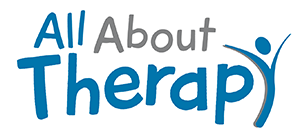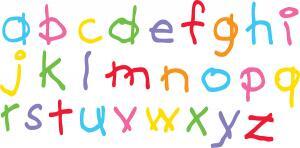How to help your child begin to write letters
When your child is approaching pre-kindergarten age (4-5 years of age) it’s appropriate for them to begin to learn how to write letters. At this age it is beneficial for children to learn how to write letters through multi-sensory play. For example, in a sandbox, mud puddle, or using finger paint, write the letter “O” or “T” with a stick or using an index finger. Bigger motions (sometimes moving the whole arm to write) are beneficial in helping the brain learn how to write letters initially.
Before progressing to letters, your child should be able to copy simple shapes such as circles, triangles, and squares. Knowledge of these shapes will help your child learn to write letters. Capital letters are also easier to learn first.
Good letters to start with:
Circular letters: Start with letters “O” and “Q” to build off knowledge of how to write circles. You can even tell your child, “Look, you drew a circle! Do you know what else is a circle shape? Letter “O”! The words octopus and octogen start with letter “O.” This may help them draw a connection between shapes and letters. Letters “C” and “D” also have a curve shape and naturally progress from letters “O” and “Q.”
Letters with straight vertical and horizontal lines: Letters that build off knowledge of shapes such as a rectangle and square are also good letters to start with. These letters include capital letters “E,F,H,I,L,T.” These letters are easy to draw after a child has mastered drawing the vertical and horizontal lines used in squares and rectangles.
Letters with a small curve: Progressing further from letters with a big curve are letters with a small curve. These letters include capital letters “B, P, R.” These letters progress naturally after circular letters and letters with a big curve.
Letters with diagonal lines: Letters with diagonal lines can be more difficult to imitate. These letters include, “A,K,M,N,V,W,X,Y,Z.” These letters progress naturally after your child is able to imitate and copy vertical and horizontal lines in letters “E,F,H,I,L,T.”
Letters with advanced curves: Letters with advanced curves can also be more difficult to imitate. These letters include, “G,J,S,U.” These are introduced after letters with a small curve, as they require more advanced fine motor skills and greater spatial awareness.
The Learning Without Tears program has some great resources for learning capital letters through multi-sensory play. Their wood pieces set for capital letters can be used in conjunction with their capital letter cards for wood pieces. You can organize the capital letters by the groupings discussed above and have your child place the wood pieces on the capital letter card and then trace the letter with their index finger. The Wet-Dry-Try boards, chalk, and sponge cubes can be used to write capital letters in a method that includes repetition of the letters. Roll-A-Dough letters is another great multi-sensory teaching tool that utilizes rolling dough to form letters.
Have fun teaching your child capital letters through multi-sensory play!


